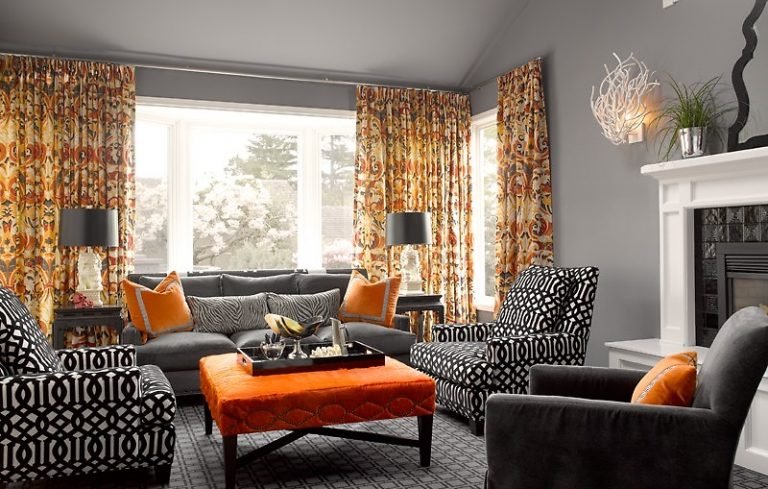Patterns can transform a room from plain to eye-catching. They add depth, texture, and personality to your home’s interior decor. Choosing the right patterns, however, can be a challenge. With so many styles to choose from, it’s important to consider how different patterns will work in harmony with the rest of your decor. Here’s how to choose the right patterns for your home’s interior.
1. Consider the Overall Style of Your Space
Before selecting patterns, take into account the overall style of your room. Do you prefer a modern, minimalist look, or do you lean more towards traditional or bohemian styles? The patterns you choose should complement the style you’re aiming for.
- Modern Spaces: Opt for geometric, abstract, or clean, simple patterns.
- Traditional Spaces: Floral, damask, or paisley patterns work well.
- Bohemian Spaces: Layered patterns like tribal, ethnic, or eclectic designs bring vibrancy and warmth.
2. Match Patterns with Room Size
Patterns can impact how a room feels. Larger patterns may overwhelm a small room, while tiny patterns may get lost in a larger space. Here’s how to approach pattern choices based on room size:
- Small Rooms: Opt for smaller or more delicate patterns, such as pinstripes or floral motifs, to create a sense of openness.
- Large Rooms: Bold, large patterns like oversized florals or geometric shapes can fill the space and add drama.
3. Use Color to Balance Patterns
Color plays a crucial role in making patterns work together. Choose patterns that share similar color palettes to ensure they feel cohesive. If you prefer mixing patterns, pick one dominant pattern and match others in neutral or complementary colors.
- Neutral Patterns: If your room already has a strong color theme, neutral patterns like gray stripes, beige chevrons, or soft plaids are safe choices.
- Bold Patterns: If you’re working with a neutral base, use bold and contrasting patterns in colors like navy, emerald green, or deep red to make a statement.
4. Start with One Focal Pattern
If you’re unsure where to start, choose one large focal pattern to anchor your design. This could be a patterned rug, a statement wall, or a large piece of furniture like a patterned sofa or bedspread. From there, you can build other patterns around it, making sure they either contrast or complement the focal piece.
5. Experiment with Scale and Proportions
Mixing patterns of different scales (sizes) can create balance and visual interest. However, be mindful of the proportion between patterns to avoid clashing designs.
- Large Patterns: Use sparingly. Pair large patterns with smaller, more subtle patterns to prevent them from overwhelming the room.
- Small Patterns: Perfect for mixing with larger patterns, small-scale designs like polka dots or tiny florals work well on pillows, curtains, or throws.
6. Consider Texture Along with Pattern
Textures add another layer to your interior decor. Mixing patterns and textures can create a harmonious and visually appealing space. Think about combining smooth, shiny fabrics with more matte or textured ones, like velvet with silk or linen with leather, to balance the overall aesthetic.
7. Don’t Be Afraid to Mix Different Patterns
One of the best ways to use patterns is by mixing them. However, mixing patterns successfully requires careful planning. To mix patterns like a pro, follow these tips:
- Vary the Type: Combine different types of patterns, such as stripes with florals, or geometric with abstract.
- Balance the Space: Use one dominant pattern, one secondary pattern, and one neutral. This will create a visually balanced effect without overwhelming the space.
- Similar Color Scheme: Mixing patterns with a consistent color palette will help maintain a cohesive look.

8. Use Patterns to Define Different Zones
If you have an open-plan space or large room, you can use patterns to define different areas. For example, you might use a bold patterned rug in the living area while keeping the dining area simple with solid colors or more subtle patterns. This creates a sense of separation and organization without the need for walls.
9. Pay Attention to the Mood You Want to Create
Different patterns evoke different feelings. For example:
- Floral Patterns: Often associated with femininity and tranquility, floral prints work well in bedrooms or peaceful spaces.
- Geometric Patterns: These are modern and energetic, ideal for spaces that require focus, like home offices or kitchens.
- Stripes: Offer a timeless, structured feel and can work in almost any room, especially when used in neutral tones.
Conclusion
Choosing the right patterns for your home’s interior is about more than just aesthetic appeal—it’s about creating harmony, balance, and a space that feels uniquely yours. By considering your space’s style, size, and color scheme, along with experimenting with different patterns and textures, you can achieve a look that is both stylish and cohesive. Don’t be afraid to mix things up and have fun with your designs!











